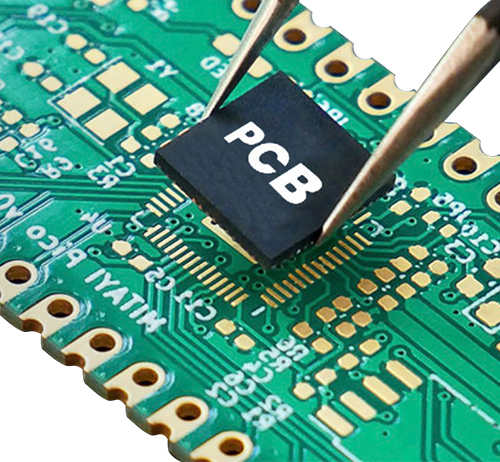Time:2022-07-22 Visit:
As we all know, PCB development including design, PCB fabrication and PCB assembly has been moving towards smaller and more complex architectures for some time now. This trend is driven by the need for greater functionality and wider deployment options, especially in more compact locations. Much of the PCB industry's answers focus on the miniaturization and increased layer count of traditional substrates and laminates. But challenges such as heat dissipation, removal of excess from circuit boards, and coefficient of thermal expansion (CTE), which describe the tendency of a material to change as the temperature applied to it, has led to the search for others that can respond material is more favorable for these problems. One result that emerged was ceramics.
pcb circuit board patch

Ceramic materials (eg, alumina, aluminum nitride, and beryllium oxide) outperform traditional sheets such as polyimide, polystyrene, epoxy fiberglass, and phenolic resins in thermal conductivity, erosion resistance, and CTE . Component compatibility and high-density trace routing, such as for High Density Multimedia Interface (HDMI) connections. These properties make ceramic materials ideal for use in multilayer boards, which can be classified according to their manufacturing method.
Alumina ceramic substrates have high mechanical strength, good insulation and light protection, and are widely used in multilayer wiring ceramic substrates, electronic packaging and high-density packaging substrates. However, at present, there are some problems in the production of alumina ceramic substrates in China, such as high sintering temperature, etc., which leads to the application of this component in my country mainly relying on imports.
Alumina has many isomorphous crystals, such as α-Al2o3, β-Al2o3, γ-Al2o3, etc. Among them, α-Al2o3 has high stability, its crystal structure is compact, its physical and chemical properties are stable, and it has density and mechanical properties. The advantage of higher strength is that it has more applications in industry. Alumina ceramics are classified by the purity of alumina. The purity of alumina is "99%, which is called corundum porcelain, and the purity of alumina is about 99%, 95% and 90%, which is called 99 porcelain, 95 porcelain and 90 porcelain, content" 85% alumina ceramics are generally called high alumina ceramics. The bulk density of 99.5% alumina ceramics is 3.95g/cm3, the flexural strength is 395MPa, the linear expansion coefficient is 8.1×10-6, the thermal conductivity is 32W/(m·K), and the dielectric strength is 18KV/mm.
Black alumina ceramic substrates are mostly used in semiconductor integrated circuits and electronic products. This is mainly because most electronic products have high photosensitivity, and the packaging materials need to have strong shading properties to ensure the clarity of digital displays. Therefore, many Packaged on a black alumina ceramic substrate. Black alumina ceramics used in electronic product packaging, based on the needs of its application field, the selection of black colorants needs to combine the performance of ceramic raw materials. For example, it is necessary to consider that the ceramic raw materials need to have good electrical insulation. Therefore, in addition to the final coloring degree and mechanical strength of the ceramic substrate, the black colorant should also consider its electrical insulation, heat insulation and electronic properties. Other functions of the encapsulation material. In the process of ceramic coloring, the low temperature environment may affect the volatility of the colorant and keep it for a certain period of time. During this process, the free state colorant may aggregate into spinel compounds, which can prevent the colorant from continuing in a high temperature environment. Volatile to ensure coloring effect